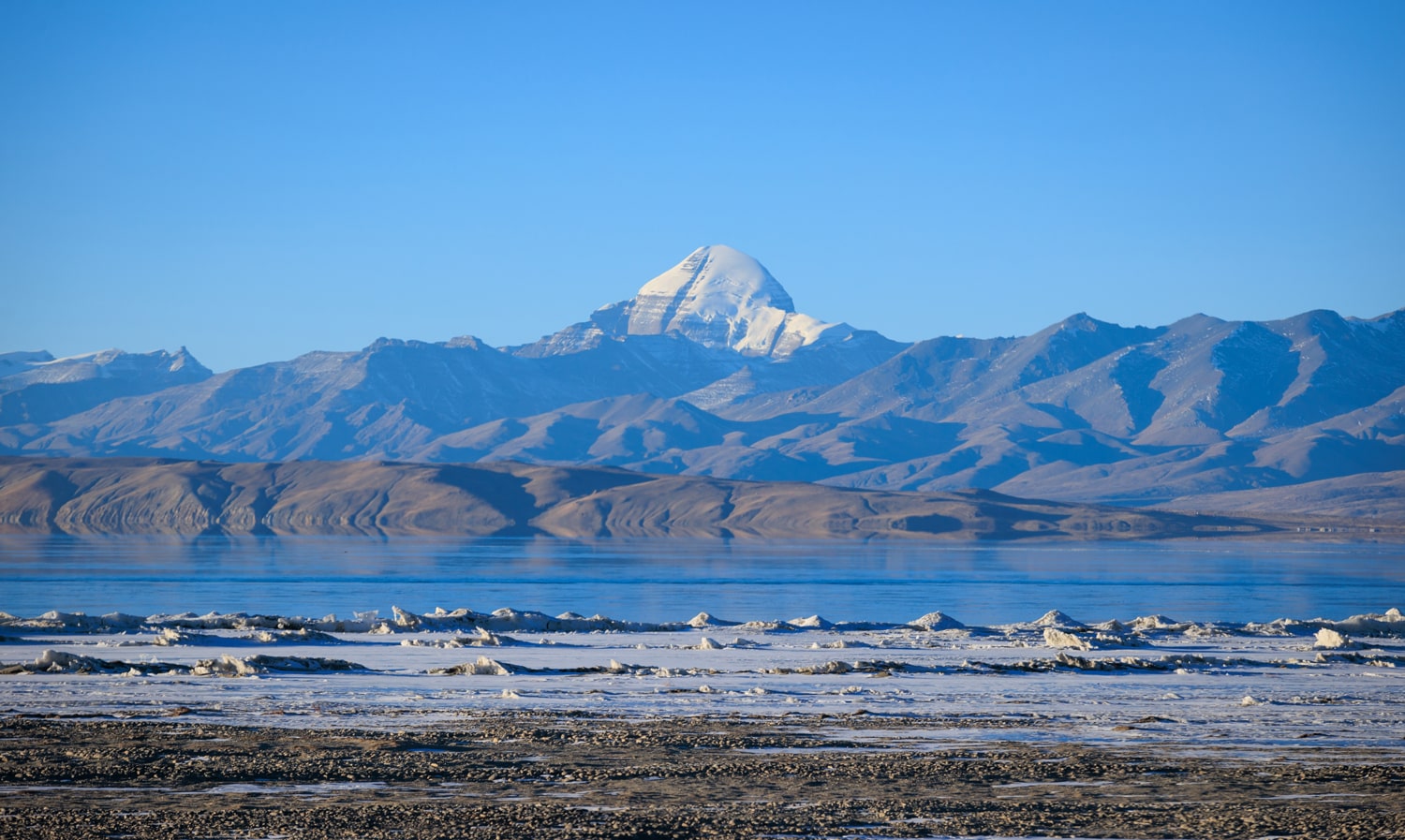Introduction
When you commence the journey to Kailash Mansarovar, you’re not just visiting a stunning natural wonder; you’re stepping into a domain steeped in spiritual significance for millions around the world. Revered by Hindus, Buddhists, Jains, and Bon practitioners, this sacred site represents the abode of Lord Shiva and is seen as a path to enlightenment and salvation. However, to fully appreciate this pilgrimage, understanding the weather and temperature is essential. The region’s harsh and unpredictable conditions can greatly impact your experience. Preparing for the varying weather patterns will help guarantee your journey is both spiritually fulfilling and physically manageable. By knowing what to expect, you’ll be better equipped to embrace the challenges and rewards that Kailash Mansarovar offers.
Geographical and Climatic Overview
Understanding the geographical and climatic factors at play is essential for anyone planning to commence the Kailash Mansarovar pilgrimage. Situated in the remote Tibetan region, Mount Kailash and Mansarovar Lake lie at an altitude of around 4,500 meters, creating a high-altitude Himalayan climate. This environment is characterized by sharp temperature fluctuations, with cold nights and mild days. The monsoon influences weather patterns, but the region remains relatively dry, with occasional snowfall. Factors like altitude and seasonal variations greatly affect weather conditions, making them unpredictable. As you prepare for this pilgrimage, be aware that the unique geography not only enhances the spiritual experience but also demands careful planning to navigate the challenging climatic aspects of this sacred journey.
Seasonal Weather and Temperature Variations
Kailash Mansarovar is a sacred destination for many pilgrims and travellers, offering breathtaking landscapes and profound spiritual experiences. Understanding the weather and temperature variations throughout the year is crucial for planning a safe and fulfilling journey. Here’s an overview of what to expect in each season:
Spring (May to June) – Ideal for Pilgrimage
Day time Temperatures: 5°C to 15°C
Night time Temperatures: -5°C to 5°C
Highlights:
- Pleasant Climate: The weather is mild, making it comfortable for outdoor activities and the Kailash Kora (circumambulation)
- Saga Dawa Festival: This significant Tibetan festival, celebrating Buddha’s birth, enlightenment, and death, usually falls in May or June, attracting numerous pilgrims.
Considerations:
- Cold Nights: Temperatures can drop near or below freezing at night, so warm clothing is essential.
Summer/Monsoon (July to August) – Warm but Wet
Day time Temperatures: 10°C to 20°C
Night time Temperatures: 7°C to -2°C
Highlights:
- Lush Scenery: The landscape becomes vibrant with greenery, offering picturesque views.
- Warmer Days: Daytime temperatures are relatively higher, providing comfortable trekking conditions.
Considerations:
- Rainfall: Although Tibet receives less rainfall than other regions, occasional showers can make trails slippery.
- Crowds: This period coincides with the holy month of Shravana, leading to an influx of pilgrims.
Autumn (September to October) – Clear and Tranquil
Daytime Temperatures: 5°C to 15°C
Nighttime Temperatures: -5°C to -10°C
Highlights:
- Clear Skies: Post-monsoon clarity offers stunning views of Mount Kailash and surrounding peaks.
- Fewer Crowds: A decrease in visitors provides a more serene experience.
Considerations:
- Cooling Temperatures: As winter approaches, temperatures begin to drop, especially at night.
Winter (November to April) – Harsh and Inaccessible
Day time Temperatures: -5°C to 5°C
Night time Temperatures: -15°C to -20°C
Highlights:
- Snow-Capped Peaks: The region is blanketed in snow, offering a pristine but challenging environment.
Considerations:
- Extreme Cold: Severe temperatures and heavy snowfall make travel hazardous.
- Closed Routes: Many paths become impassable, and local facilities may shut down.
Weather Challenges and Precautions
While commencing the journey to Kailash Mansarovar, you’ll face various weather challenges that require careful preparation and awareness. Altitude sickness is a significant risk; acclimatization is vital to prevent symptoms like headaches and nausea. Make certain to pack oxygen cylinders and necessary medications. Layering your clothing is essential, as temperatures can fluctuate dramatically, especially with wind chills and sudden snowfalls. Be prepared for unexpected weather changes and pack essentials like waterproof jackets and thermal layers. Familiarize yourself with the symptoms and remedies for altitude sickness, as this knowledge can be lifesaving. Always stay informed about current weather conditions during your trek to guarantee a safe and fulfilling pilgrimage experience.
Frequently Asked Questions
What Gear Is Essential for the Kailash Mansarovar Pilgrimage?
For the Kailash Mansarovar pilgrimage, you’ll need sturdy trekking boots, warm clothing, a reliable backpack, hydration system, trekking poles, a first-aid kit, and sun protection. Don’t forget your spiritual essentials like prayer beads or texts!
How Does Altitude Sickness Affect Weather Conditions?
At 15% altitude sickness affects many travelers. It makes you feel dizzy and nauseous, impacting your ability to adapt to changing weather. Be mindful of your body’s reactions to avoid complications during your journey.
Are There Specific Weather-Related Health Risks to Consider?
When you trek in high-altitude regions, you should watch for risks like hypothermia, frostbite, and altitude sickness. Staying hydrated and dressing in layers helps mitigate these weather-related health concerns during your journey.
What Emergency Services Are Available During the Pilgrimage?
During your pilgrimage, emergency services include local medical facilities, rescue teams, and trained guides. It’s essential to stay informed and prepare adequately for any health concerns or emergencies that may arise along the journey.
How Do Local Festivals Impact Weather and Travel?
When you’re walking in someone else’s shoes, local festivals can greatly impact your travel plans. They often draw crowds, leading to road closures and heightened demand for accommodations, so plan accordingly to avoid any hiccups.
Conclusion
Visiting Kailash Mansarovar is awe-inspiring, but its extreme weather demands preparation. Winter temperatures drop to -30°C, making proper gear and acclimatization essential.
For a safe and fulfilling pilgrimage, plan your trip between May and September when conditions are milder. Pack wisely, prepare for high altitudes, and embrace both the spiritual and physical challenges. By respecting the climate and the sacredness of this journey, you’ll enhance your experience. Safe travels!

